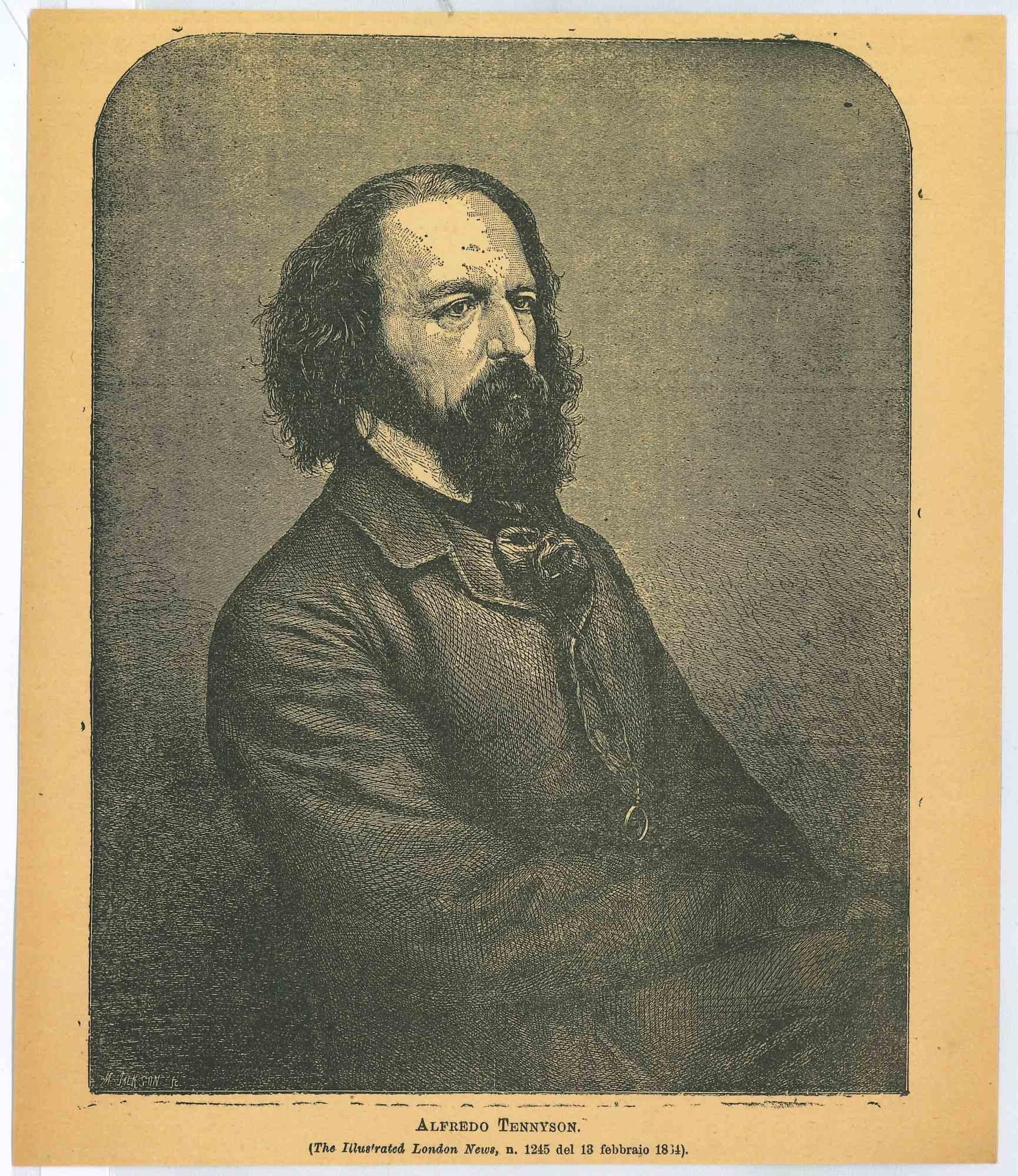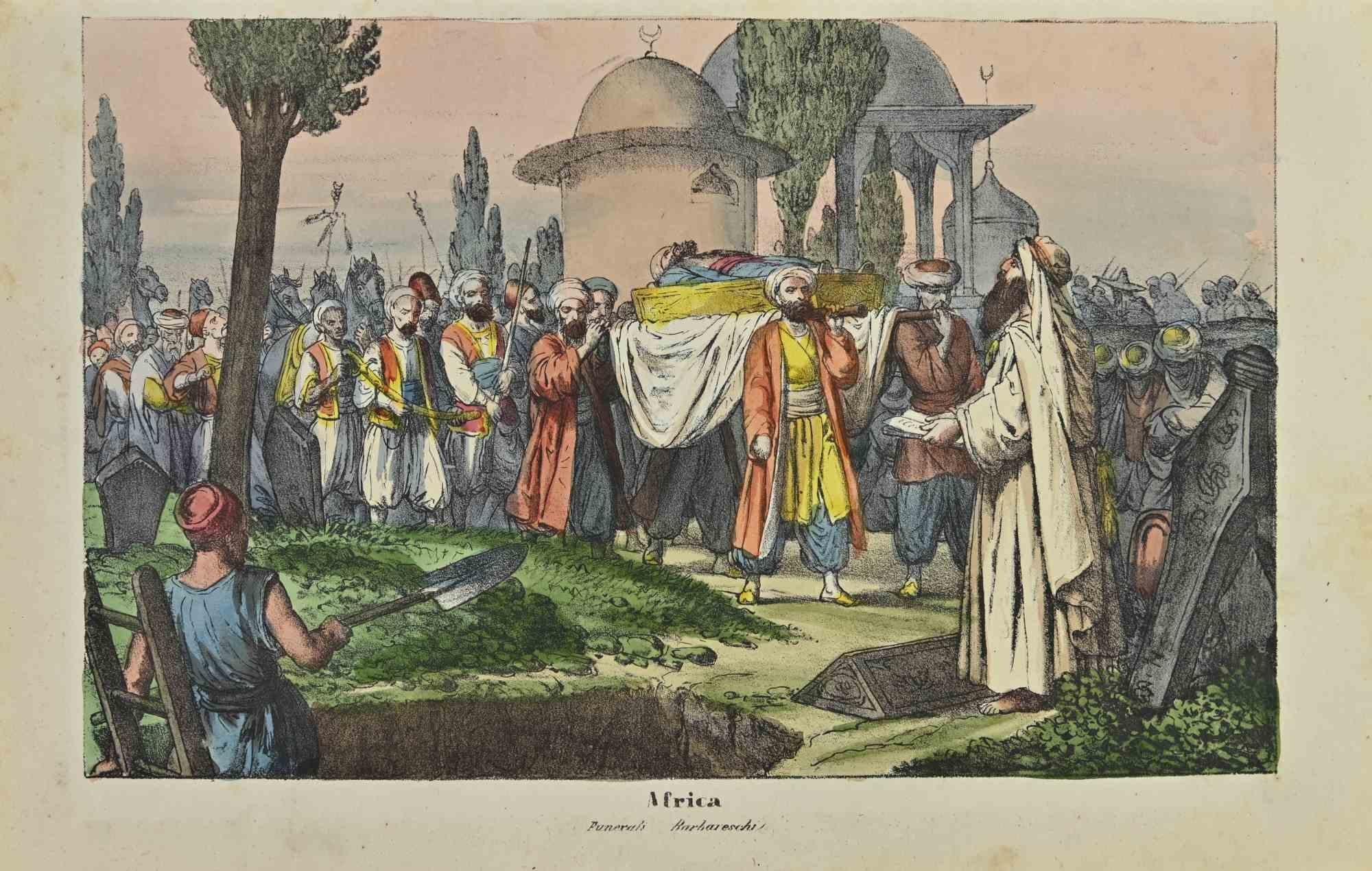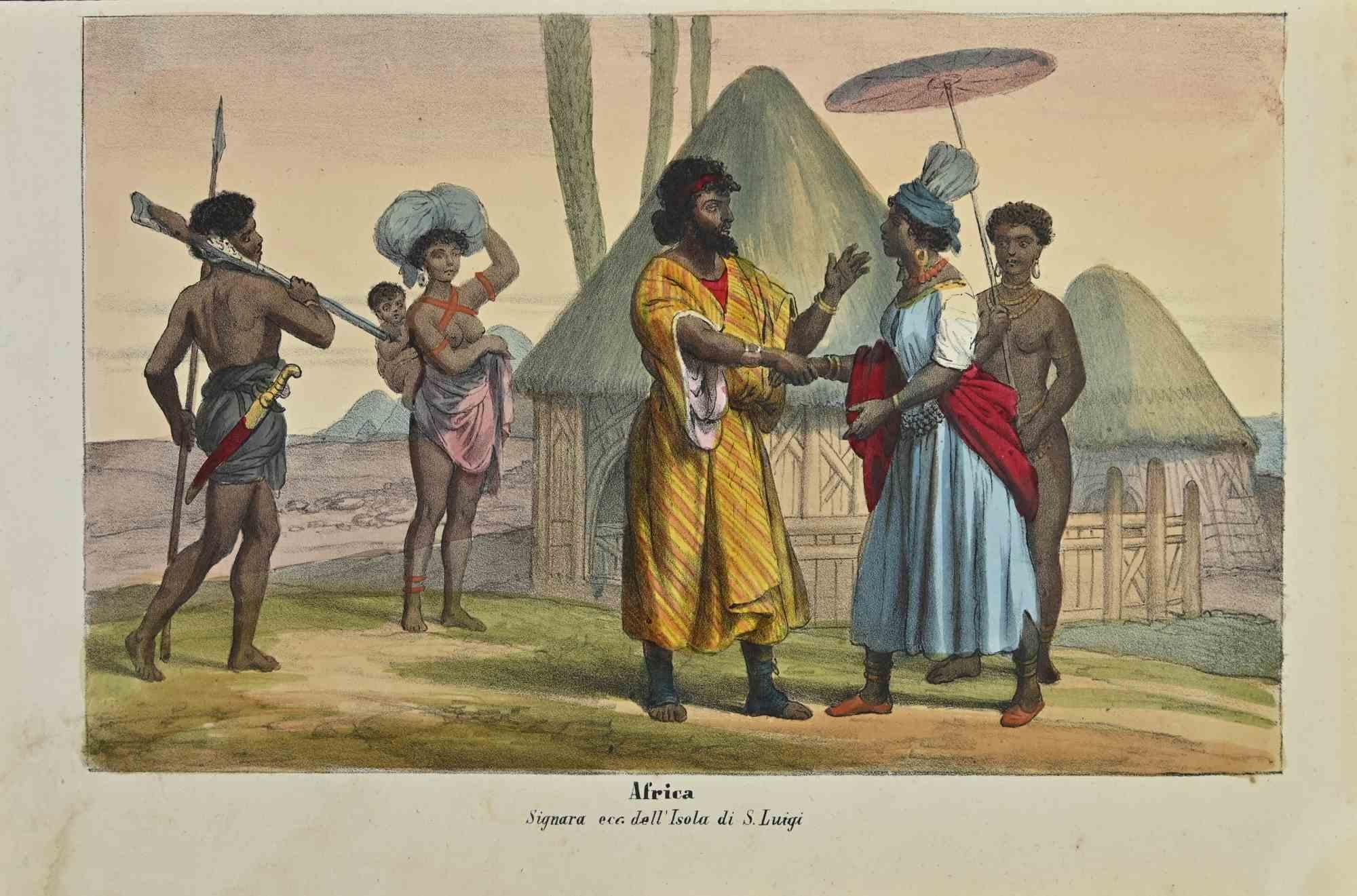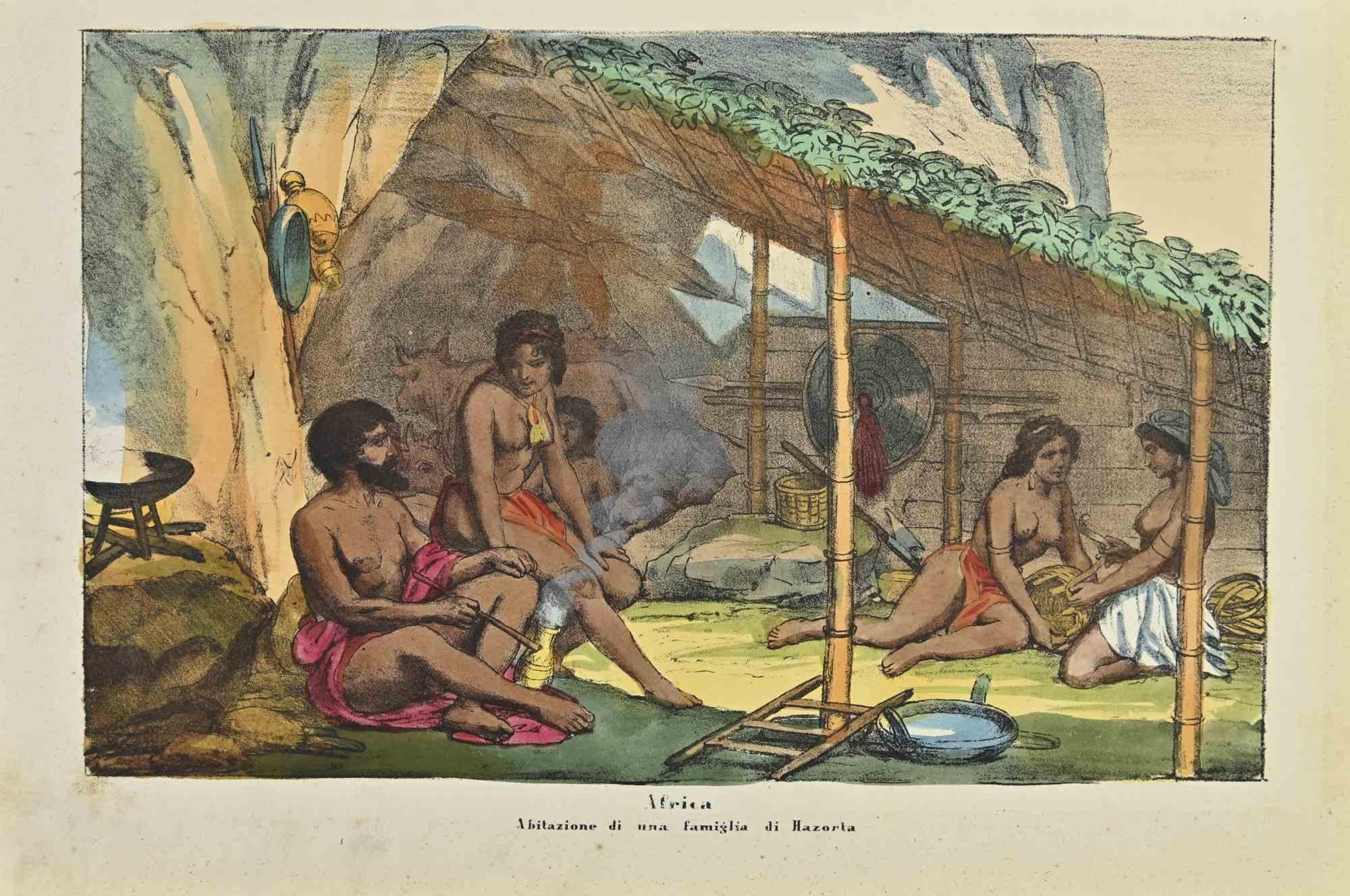Items Similar to The Bird - Lithograph
Want more images or videos?
Request additional images or videos from the seller
1 of 7
(after) Georges BraqueThe Bird - Lithograph1965
1965
About the Item
Title: The Bird
Printed signature
Dimensions: 38 x 28 cm
from the edition of 250 as issued in Warnod, Andre, "Les Peintres mes amis" (Paris: Les Heures Claires, 1965)
The father of Cubism
Three Cubist that distinguishes art historian periods were initiated and developed by Georges Braque: The Cubist Cézanne (1907-1909), Executive (1909-1912) and synthetic (1912-1922).
Post-Impressionist and fawn, Braque no longer adheres to the contingency of a decorative way or the other. Cézanne’s paintings exhibited at the Grand Palais during the retrospective of 1907 are a revelation: Cézanne sought and invented a pictorial language. In his footsteps, Braque went to the South with the reasons of the Master. He returned with Estaque landscapes and surprising Ciotat it keeps Cezanne geometric model and retains the “passages” continuity from one surface to another to create the sensation of “turning around” of the object represented. But he wants to go after the consequences of the vision of Cezanne. In his paintings Houses in L’Estaque (1908) it simplifies the volumes of houses, neglects detail by removing doors and windows: the plastic rhythm that builds the table. Large Nude , a masterpiece of the period, can be considered the first work of Cézanne cubism .
Systematizing and deepening Braque discoveries open the door analytical cubism. In 1909, his painting became more cerebral than sensual. The pattern is recreated in the two-dimensionality of the canvas, leaving aside any illusionistic perspective. In Still Life with Violin, objects are analyzed facets according to their characteristic elements, each facet referring to a particular view of the object. There are so many facets of points selected view: Table reflects the knowledge of the object and the ubiquity of the eye. Moreover, Braque is looking for the essence of the objects in the world rather than their contingency, which explains the absence of light source and use of muted colors (gray, ocher), contingent aspects of the object . But formal logic has stepped facets, erased any anecdote to the object and ultimately led to his painting a hermetic more marked on the edge of abstraction (see the series of Castle Roche-Guyon ).
Braque, anxious to keep the concrete and refusing at all costs that the logic of Cubism takes the paintings to abstract, reintroduced signs of reality in his paintings in 1912 marks the beginning of Synthetic Cubism. Historians speak of “signs of real” rather than reality because what interests Braque, this is not to put reality into a table, but to create a painting which, by its language, refers to the real. To do this, he invented two major techniques XX th century inclusions and contributions. The inclusions consist of painting objects that have no real depth, materials (wallpaper in Nature morte aux playing cards faux wood is a pictorial inclusion) or letters (calligraphic inclusion in Portuguese ), made first brush and a few months later stencil. Contributions are defined in contrast with the collage on canvas of foreign materials: glued or sand paper, sawdust, etc.. Regarding the collages, Braque used for the first time in September 1912 a piece of adhesive paper imitating faux wood Compote and Glass , then the packet envelope of tobacco Bock in 1912-1913, or an advertisement in Damier , 1913). Inputs and inclusions refer to an external object in the table, without “emulate” this object. Away from their appearances, objects are represented in closest essence of the objects in the real world sense.
This is also the time of Synthetic Cubism that Braque invented paper sculpture. There are, unfortunately, and no one is living proof of a photograph makes it possible to realize: Paper and paperboard.
Métamorphoses period(1961-1963).
In 1961, Georges Braque worked on a Greek head for the Louvre, which obsesses him, and he wishes to free his mind. He tried several times to bring out the paint and the result was unsatisfactory. He thinks the ultimate metamorphosis its Greek head projected in three dimensions. He calls in his studio of Baron Heger Loewenfeld, master lapidary, and he communicates his enthusiasm during the “fateful encounter.” Nine months later, in honor of the eighty years of Georges Braque, Heger Loewenfeld offers the Master of the ring Circe: the famous Greek head finally exorcised, carved in an onyx. Braque Loewenfeld then asked to identify other issues that haunt him.
From dated and signed by Georges Braque, Heger gouaches Loewenfeld shapes works in the fields of jewelery, lapidary art, sculpture and etrog.
In September 1962, Heger of Loewenfeld and André Malraux meet the Ministry of Cultural Affairs. The two men share their impressions of aesthetes around the cabinet precious sculptures presented by Baron. Malraux, fascinated, considers that dealing with “the apotheosis of Braque” and orders on the field that show these masterpieces he calls the “jewels” to be organized at the earliest.
March 1963, the exhibition “Bijoux de Braque” opens in the Louvre, Pavillon Marsan. It is a success, and the exposure is prolonged until mid-May.
While “Jewelry Braque” travel on the France towards New York, Georges Braque off August 31, 1963. For thirty years, Heger Loewenfeld present collection of millions of enthusiastic spectators worldwide.
At the death of Loewenfeld Heger, Armand Israel succeeded him.
Georges Braque – his life (1882-1963)
1882 (May 13): Born in Argenteuil. The grandfather Georges Braque has a painting business.
1890 : The Braque family moved to Le Havre. The father founded a painting business building.
1893 : If enrolled in evening classes of Fine Arts.
1899 Before finishing his studies, apprenticed to his father, then in a decorative painting contractor.
1900 : Continues his apprenticeship as a painter and decorator in Paris. Comes to drawing lessons from the municipal workshop Batignolles.
1901-1902 : Military service near Le Havre.
1902 : Moves to Montmartre and enrolled at the Académie Humbert.
1905 :’s Fauves at the Salon d’Automne.
1906 : First exposure XXII th Salon des Independants. From June 12 to September 11: trip to Antwerp with Friesz where he made his first paintings cats .
1907 : In XXIII th Salon des Independants (March), sells his paintings to art critic Wilhelm Uhde and Kahnweiler merchant of German origin. Continued his wild paintings La Ciotat with Friesz (May), L’Estaque (late September and again in October and November). Between gradually into contact with Picasso.
1908 : Third stay at L’Estaque (end of May). The Salon d’Automne refuses paintings made by Braque, the truly innovative style. Kahnweiler them immediately accepts and organizes the first solo exhibition of the artist. The catalog is prefaced by Apollinaire. The critic Louis Vauxcelles discovers “cubes”: the birth of cubism .
Together more closely with Picasso, almost daily, Braque compared to a “mountain climber.”
1912 : Moves with Octavia (known Marcelle) Lapré. Spends the summer with Picasso in Avignon. Signed his first contract with Kahnweiler (November).
1914 : Mobilized. Kahnweiler gallery is taken as “property belonging to the enemy,” with all Cubist Braque paintings.
1915 : Injured, Braque trepanated
1916 : Discharged, he returned in Avignon
1917 : Start writing his Notebook Publishes “Thoughts and reflections on the painting” in the North-South magazine . Sign a contract with the dealer Léonce Rosenberg.
1918 : Starts his drawings Diaries.
1919 : Expose gallery in The Effort Moderne Léonce Rosenberg.
1921 : Selling his paintings belonging to the receiver Kahnweiler. At the Hotel Drouot, boxing Léonce Rosenberg, whom he accuses of selling his paintings at a low price.
1923 : The last fires were extinguished Cubism, Braque looking for a new breath. Sign a contract with the art dealer Paul Rosenberg.
1925 : Moves in her new house and studio built by Auguste Perret, near the Parc Montsouris in Paris.
1926 (14 November): Wife Octavia Lapré to Paris in 14 th district.
1929 : In fact develop a home-workshop Varengeville-sur-Mer, Normandy.
During the Occupation , is in Paris.
1947 is the new dealer Aimé Maeght.
1948 : Grand Prix for Painting at the Biennale in Venice. Maeght publish editions Notebook Georges Braque (1917-1947).
1953 : Braque realizes the ceiling of the Louvre Henri II room.
1954 : Decoration Mas Bernard Saint-Paul-de-Vence. Creating windows for the church of Varengeville. Interview with Dora Vallier in the journal Cahiers d’art.
1960 : Exhibition of his graphic work at the National Library.
1961 : Exhibition Workshop Braque at the Louvre. Meet Heger of Loewenfeld.
1963 : Exhibition Jewelry Braque , the Museum of Decorative Arts (March-May). Death (August 31) while the collection “Les Bijoux de Braque” come to New York aboard the ship France . Funeral Oration in front of the colonnade of the Louvre, pronounced by André Malraux, Minister of State for Cultural Affairs and broadcast on ORTF (September 3). Burial in the marine cemetery Varengeville-sur-Mer (September 4).
- Creator:(after) Georges Braque (1882 - 1963, French)
- Creation Year:1965
- Dimensions:Height: 14.97 in (38 cm)Width: 11.03 in (28 cm)Depth: 0.04 in (1 mm)
- Medium:
- Movement & Style:
- Period:
- Condition:
- Gallery Location:Collonge Bellerive, Geneve, CH
- Reference Number:1stDibs: LU16122412413
(after) Georges Braque
Braque began his artistic career painting in a Fauvist style, strongly influenced by friends Raoul Dufy and Henri Matisse. In 1907, however, after befriending Pablo Picasso, Braque began focusing on Cubist compositions and a more muted color palette. He and Picasso would work closely until 1914 when Picasso began focusing on symbolism and portraiture, while Braque sought to explore “pure composition” void of meaning and symbolism. A 1922 exhibition at the Salon d’Automne in Paris launched Braque further into fame. He won several important prizes over the next few decades, including First Prize at the Carnegie International and the main prize for painting at the Venice Biennale. In 1961, Braque became the first living artist to ever have his work displayed at The Louvre. Throughout the 1930s and 40s, Braque created many works featuring Greek and Roman mythological imagery such as this print, though his hope was to use the images simply as visual objects stripped of their histories, lore, and symbolism.
About the Seller
4.9
Gold Seller
These expertly vetted sellers are highly rated and consistently exceed customer expectations.
Established in 2015
1stDibs seller since 2015
910 sales on 1stDibs
Typical response time: 1 hour
- ShippingRetrieving quote...Ships From: Collonge Bellerive, Geneve, Switzerland
- Return PolicyA return for this item may be initiated within 7 days of delivery.
More From This SellerView All
- The Human Comedy - LithographBy (after) Pablo PicassoLocated in Collonge Bellerive, Geneve, CHAfter Pablo Picasso The Human Comedy - Lithograph after an original drawing, as published in the journal "Verve" Printed signature and date Dimensi...Category
1950s Modern Figurative Prints
MaterialsLithograph
- Jean Dubuffet - original lithograph from XXe Siecle magazineBy Jean DubuffetLocated in Collonge Bellerive, Geneve, CHJean Dubuffet - Original Lithograph from XXe Siecle magazine 1958 Dimensions: 32 x 25 cm Edition: G. di San Lazzaro. Unsigned and unumbered as issuedCategory
1960s Modern Figurative Prints
MaterialsLithograph
- Marc Chagall - The Bible - Paradise - Original LithographBy Marc ChagallLocated in Collonge Bellerive, Geneve, CHMarc Chagall, Original Lithograh depicting an instant of the Bible. Technique: Original lithograph in colours (Mourlot no. 234) On the reverse: another black and white original litho...Category
1960s Modern Figurative Prints
MaterialsLithograph
- Alexander Calder - Original Lithograph - Behind the MirrorBy Alexander CalderLocated in Collonge Bellerive, Geneve, CHAlexander Calder - Original Lithograph - Behind the Mirror Original lithographs produced in 1976 Dimensions: 38 x 56 cm Source: Derrière le miroir (...Category
1970s Modern Portrait Prints
MaterialsLithograph
- Marc Chagall - The Bible - Tamar - Original LithographBy Marc ChagallLocated in Collonge Bellerive, Geneve, CHMarc Chagall, Original Lithograh depicting an instant of the Bible. Technique: Original lithograph in colours (Mourlot no. 234) On the reverse: another black and white original litho...Category
1960s Modern Figurative Prints
MaterialsLithograph
- Alexander Calder - Original Lithograph - Behind the MirrorBy Alexander CalderLocated in Collonge Bellerive, Geneve, CHAlexander Calder - Original Lithograph - Behind the Mirror 2 Original lithographs on the same paper (recto/verso, on both paper sides) produced in 1976 Conditions: Good Conditions D...Category
1970s Modern Portrait Prints
MaterialsLithograph
You May Also Like
- Woman Walking Away from GentlemanBy Rudolf BauerLocated in New Orleans, LAA well dressed woman takes leave of a gentleman. Rudolf Bauer was born in 1889, in Lindenwald, Germany-Poland. The son of a wealthy engineer, Bauer became an essential part of the avant-garde movement and the birth of non-objective art in the early 1920's. Bauer began his studies at the Academy of Fine Arts in Berlin in 1905, where he learned the fundamentals and produced beautifully stylized figurative drawings. In 1912, Bauer met Herwarth Walden, a promoter of the avant-garde movement and founder of Der Sturm Art Gallery. Bauer became a member of Der Sturm, and was represented in group exhibitions along with Kandinsky, Picasso, Chagall, Klee et al. By 1922, Bauer had participated in 80 Der Sturm exhibitions in Belgium, Denmark, Great Britain, Italy, et al. In 1917, Bauer had his first one-man show at Der Sturm Gallery, exhibiting 120 works. By 1921, with his many one-man and group exhibitions, and his significant publications of his theories on art, Bauer became Germany's leading abstract expressionist painter. In 1929, Bauer founded his own private museum, Das Geistreich-Bauer (The Realm of the Spirit). In 1933, Hitler became Chancellor of the German Republic and with that modern art was branded as "sub-human". Walden closed Der Sturm and fled Germany. The purge of modern artists and curators began, but at the same time Bauer was having his work exhibited at the new Museum of Modern Art in New York City. Despite Hitler's proclamations of the "degeneracy" of modern art, Bauer continued his mission, the free expression in art, writing dictums and creating art. Meanwhile, Solomon R. Guggenheim, the famous American philanthropist, had been acquiring Bauer's work; so many pieces in fact that that he could no long fit his work within the confines of his residential suite at the Plaza Hotel in New York. In 1936, Guggenheim decided to exhibit his entire collection of Bauer's work in one venue, at the Gibbes Memorial Art Gallery in Charleston, SC. Later that year, the famous Jeu de Paume, a division of the Louvre, in Paris, honored Bauer with a one-man exhibition. As a result of the show, the Louvre purchased one of Bauer's oil paintings. Upon his return from the show at Jeu de Paume, and despite the fact he was not Jewish, Bauer was arrested and sent to a concentration camp. Filippo Marinetti...Category
Early 20th Century Modern Figurative Prints
MaterialsLithograph
- Gretchen & EricBy Robert LongoLocated in New York, NYFrom the artist’s iconic, Men in the Cities series, Robert Longo created Gretchen & Eric in 1985, each as an original lithograph measuring 72 x 35 7/8 in. (182.9 x 91.1 cm), unframed...Category
20th Century Modern Portrait Prints
MaterialsLithograph
- Portrait of Alfredo Tennyson - Lithograph - 19th CenturyLocated in Roma, ITPortrait of Alfredo Tennyson is a modern artwork realized by an Anonymous artist in the 19th Century. Lithograph print on paper. Titled on the lower. Good condition.Category
1850s Modern Figurative Prints
MaterialsLithograph
- Ancient African Customs - Lithograph by Auguste Wahlen - 1844Located in Roma, ITAncient African Customs is a lithograph made by Auguste Wahlen in 1844. Hand colored. Good condition. At the center of the artwork is the original title "Africa" and subtitle "Fun...Category
1840s Modern Figurative Prints
MaterialsLithograph
- Ancient African Customs - Lithograph by Auguste Wahlen - 1844Located in Roma, ITAncient African Customs is a lithograph made by Auguste Wahlen in 1844. Hand colored. Good condition. At the center of the artwork is the original title "Africa" and subtitle "Sig...Category
1840s Modern Figurative Prints
MaterialsLithograph
- Ancient African Costumes - Lithograph by Auguste Wahlen - 1844Located in Roma, ITAncient African Costumes is a lithograph made by Auguste Wahlen in 1844. Hand colored. Good condition. At the center of the artwork is the original title "Africa" and subtitle "Ab...Category
1840s Modern Figurative Prints
MaterialsLithograph
Recently Viewed
View AllMore Ways To Browse
Glass Violin
Lapidary Collection
1900 Ceiling Light
Retro Art Carved Rings
Step End Tables Glass
4 Library Tables
Le Roche
Vintage Formal Men
Vintage Glass Eye Studio
Nine Doors Vintage
Les Bijoux Vintage
Vintage Church Doors
Decorative Violins
Jewelry Organizer
Ring 1947
Vintage Cat Ring
Vintage Military Cabinet
Mid Century Step End Tables






